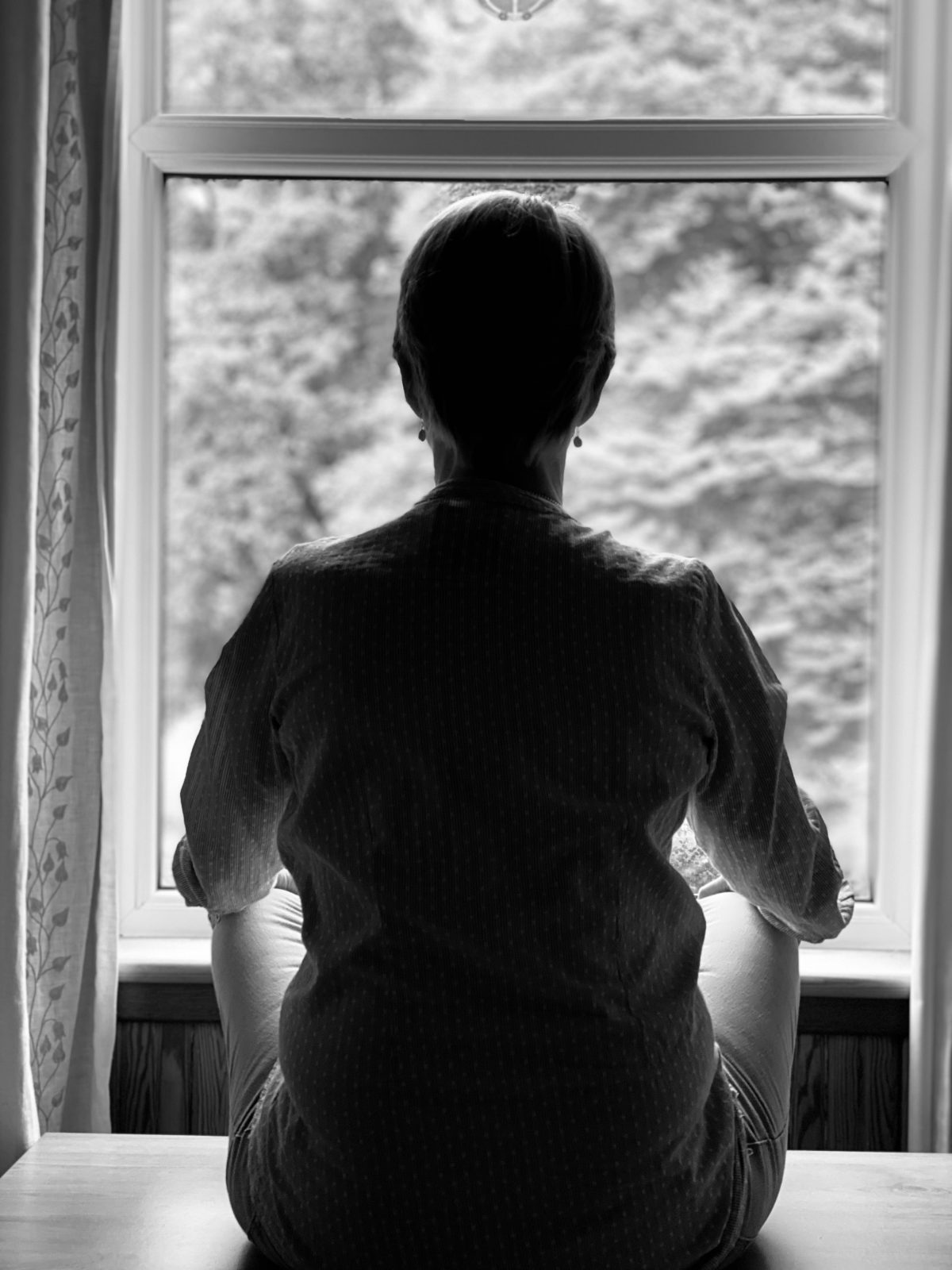The Piazza di Spagna has been the location of the Spanish Embassy to the Vatican City since the 17th century. It was also the residential location for foreign visitors from the 17th to the 19th century. Tobias Smolett , the well known 18th century writer and surgeon, wrote a book about his experiences of travelling in France and Italy. This 1766 book describes the history and social life of the places he visited, giving his own opinion about diet and morals, and guiding future travellers on how to conduct themselves. He declared that “Here most of the English reside”.
But it was not only the English, other nations were represented too and were drawn to the area; artists, writers and musicians frequented the Piazza and the nearby streets. The meeting place for some of the most talented and influential people of their times. Franz Liszt, Johann Wolfgang von Goethe, Henrik Ibsen, Honore de Balzac, Hans Christian Andersen, Felix Mendelssohn, Henry James, as well as Lord Byron, Oscar Wilde, Samuel Taylor Coleridge, Elizabeth Barrett Browning, and Robert Browning, to name but a few.
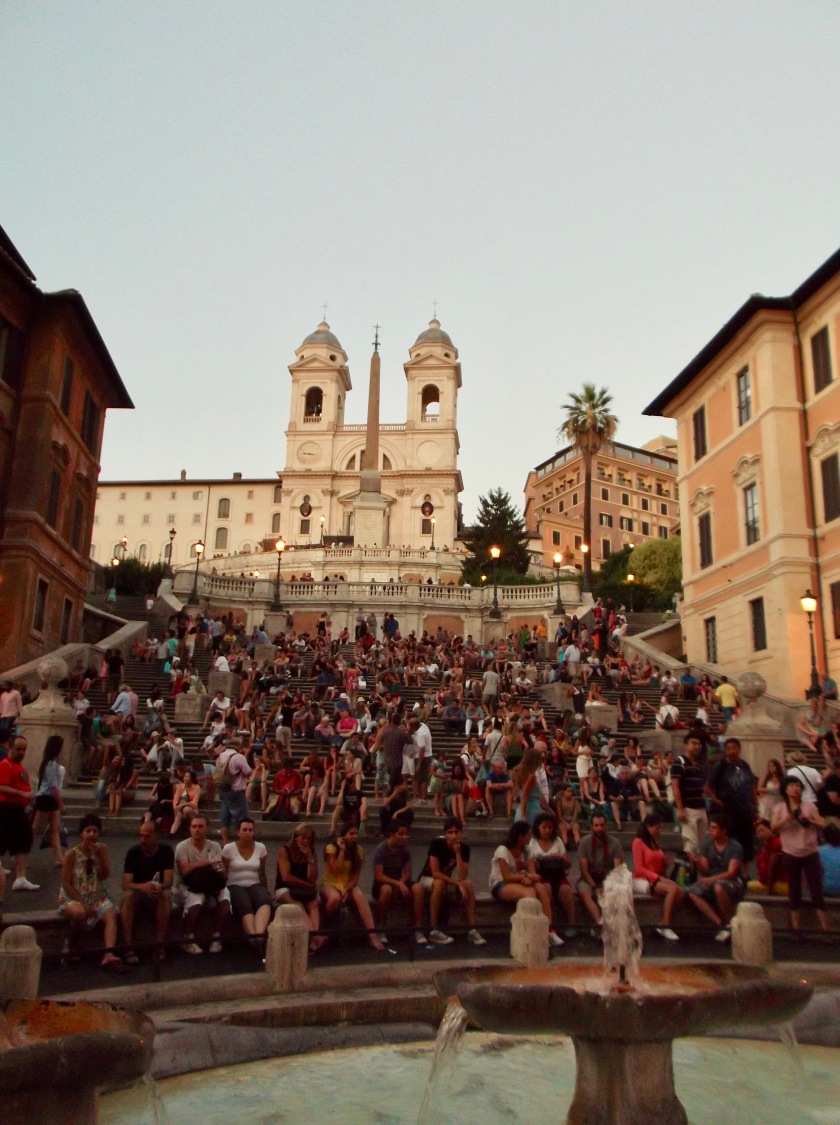
The Piazza di Spagna “Here most of the English reside” Smolett
The Piazza is famous for the Scalinata di Trinita Dei Monti, know as the Spanish Steps, which were built between 1723 to 1726, to connect the Santissima Trinita dei Monti with the Piazza. Charles VIII of France purchased land in order to found a convent for the French order of San Francesco di Paola. He also provided money to build a church the Santissima Trinita dei Monti. Approval was given by Pope Alessandro VI and construction started in 1502 using stone from Narbonne in France. The Gothic church’s towers were not built until 1580-87 when, by then, the style was out of favour. The church’s design can not be attributed to any one architect.
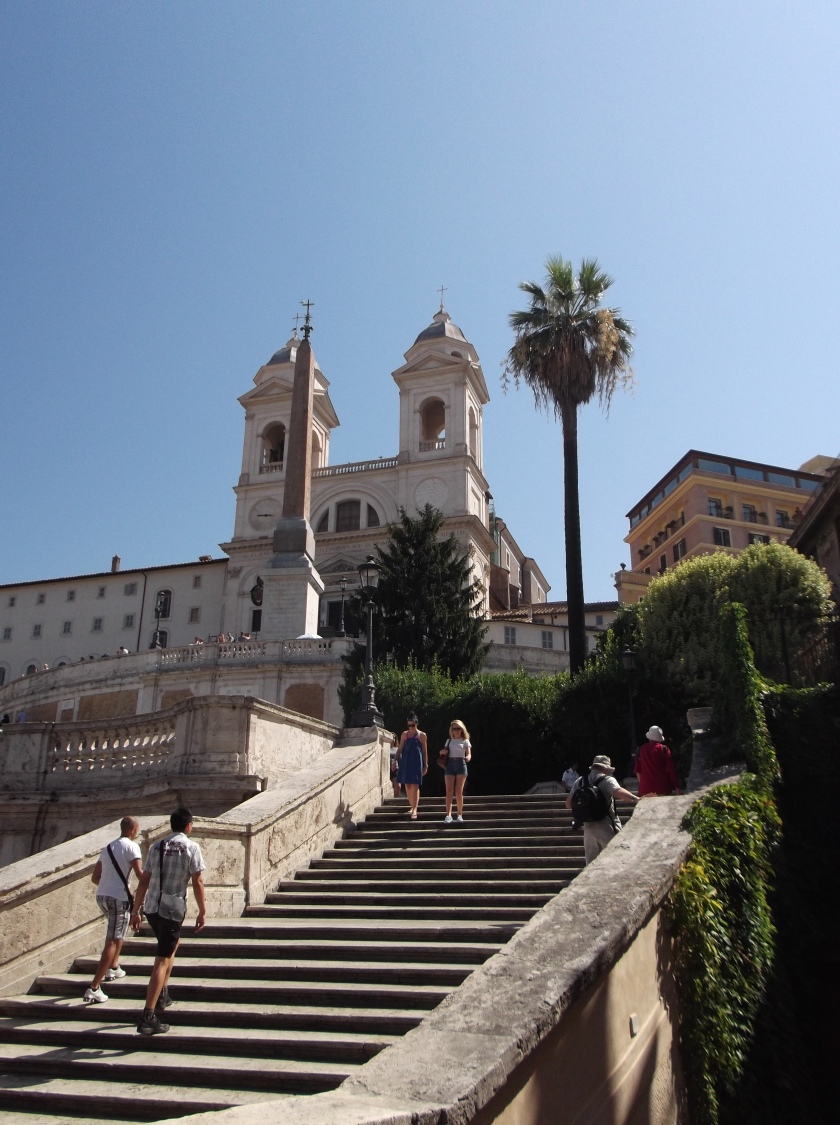
Santissima Trinità dei Monti and Third Century Obelisk
Plans to build the steps date back to the 1580s when the church was built. The plans did not proceed due to a lack of funds. It was not until 1660 when money was left to the church for the project, by a French diplomat Etienne Gueffier who had left the money in his will for the sole purpose. Mazarin, Louis XIV’s Cardinal, took over the project but unfortunately it stalled again due to Gueffier’s nephew contesting the will; and Pope Alessandro VIII taking exception to the idea of the equestrian statue of Louis XIV as part of the design. Sixty six years later the steps were finally completed. The 135 Baroque style steps were designed by the Italian architect Francesco De Sanctis, who was favoured by the French. There were diplomatic negotiations between the Vatican and French officials to make sure the completed work represented both nations.
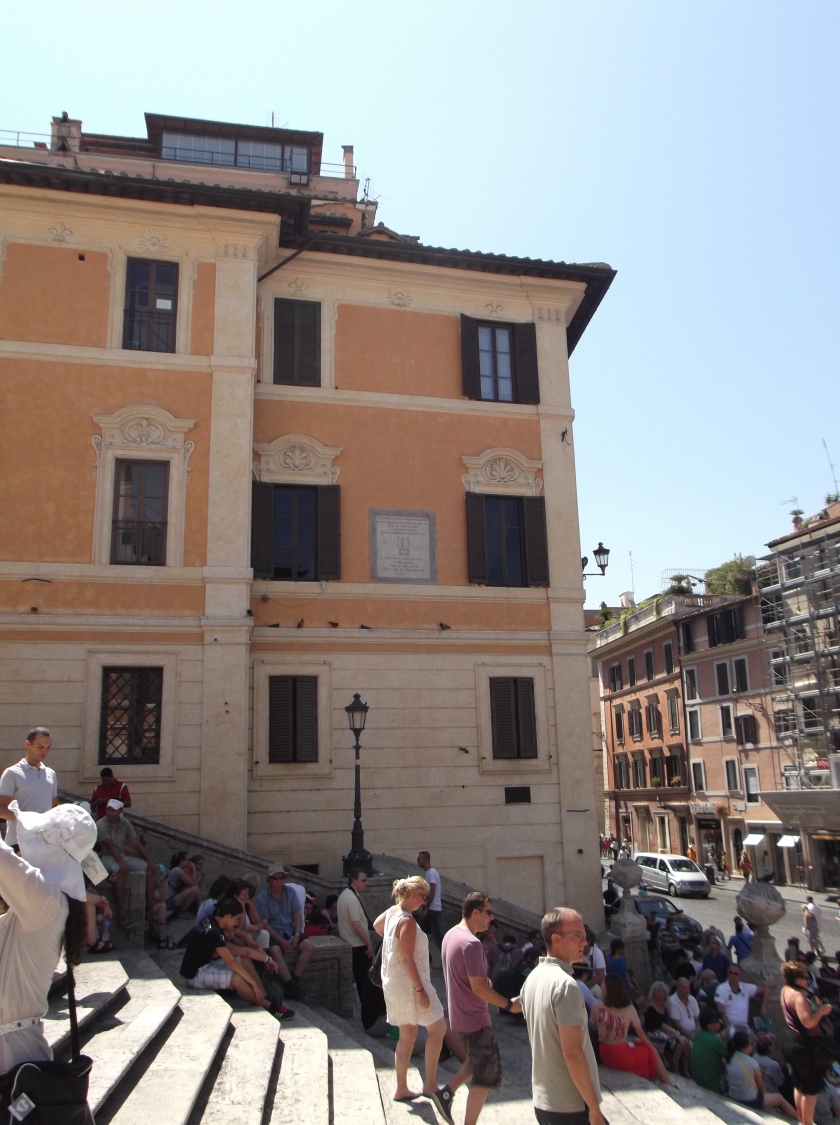
Keats-Shelly Museum viewed from Spanish Steps

Keats-Shelley Museum viewed from front with original shop front with flour-de-lis symbol above
At the base of the steps, the buildings on either side were designed by Francesco de Sanctis and constructed by the French. The Casino Rossa on the right of the steps was designed as a purpose built shop with accommodation above. It is now the Keats-Shelley Museum, but was originally a boarding house where John Keats lived for three months before he died on 23rd February 1821. John Keats originally studied medicine at Guy’s Hospital registering in October 1815, and became a licensed apothecary in 1816. He was promoted to a Dresser allowing him to dress wounds, set bones and assist with surgery. In July he passed the examinations to become a surgeon and took a summer break in Margate. Keats’ first love had been literature and though he continued to write poetry, his medical studies were taking up to much of his time. After spending his summer holiday writing, he returned to London and on the 31st October at the age of 21 he began practicing as a surgeon. In December 1816 his sonnet On First Looking into Chapman’s Homer was published in The Examiner, it was the turning point, he was disillusioned with medicine and now he could justify a change of career. Sometime after this period Keats started to take mercury for an unspecified illness, possibly veneral disease, though he was well aware how dangerous this medication was, by the summer of 1818 he was already showing signs of mercury poisoning. Towards the end of 1818 he was caring for his brother Tom who had contracted tuberculosis, because of Keats’ weakened system it was inevitable that he would also contract tuberculosis. Tom sadly died on 1 December 1818. Keats continued to write, and by the summer of 1819 he was ill with the first stage of tuberculosis. In February he started to haemorrhage, from the colour of the blood he knew he was dying. It was decided that he should travel to Italy for the winter.
On the 13 September he left England for Naples with his friend Joseph Severn, the artist. They spent ten days in quarantine before arriving in Rome on the 14 November. He became a patient of Sir James Clark who had set up a practice in Rome, and took up residence in the Casino Rossa in the Plazza di Spagna. Clark’s diagnosis was consumption and to counteract the effects of the mercury, which damages the stomach, he prescribed a starvation diet and blood letting. Keats as a physician was well aware that it was futile. He died at the age 25 and during his very short life he produced some beautiful poems. Keats had been invited to Pisa by his friend Percy Bysshe Shelley, Keats hoped he would visit him after his stay in Rome. Shelley wrote Adonais: An Elegy on the Death of John Keats upon hearing of his death. A year later when Shelley drowned there was a small copy of the Keats’ poetry in his pocket.
After the death of Keats the furniture, curtains, wallpaper and his personal property were burnt to stop the spread of disease and infection, this was decreed by Vatican Law. He was buried in the Protestant Cemetery, Shelley’s ashes were also interned here and they were joined by Joseph Severn in 1879.
The room where Keats died, the ceiling, fireplace and flooring are the only original features left.
Over the years the house fell into disrepair, but it was still attracting attention as the site where Keats died. By 1903 two American ladies were living there and showing visitors around. Eventually in 1906 a group of English, American and Italians raised the money to purchase the rundown Casino Rossa and after restoration it was formally opened in December 1909. Over the years the house suffered from only being available to the academics and its future was uncertain. In 1976 Sir Joseph Cheyne, Bt became curator and worked tirelessly to change the image; he encouraged school parties and made the house a tourist attraction. When Cheyne retired in 1990 its visitors numbered 11,000. The property is owned by the Keats-Shelley Memorial Association, a British charity, it is run as a commercial business open six days a week, all year round except for one week in December. The house’s running costs are covered by the admission fee, a gift shop and the rental income. It has a library of over eight thousand books devoted to English Romanticism, holds various events, exhibitions and poetry readings. They have a book club, competitions, awards and a website doing a successful job to keep the memory of the dead poet alive.
In the centre of the Piazza is located an unusual fountain shaped like a sinking boat. The Fontana della Barcaccia was designed by Petro Bernini. The water for the fountain was supplied from the Acqua Vergine, one of the Roman aqueducts constructed by Consul and Architect Marcus Vipsanius Agrippa. Bernini’s design of a leaking boat compensated for the minimal water pressure. The fountain was commissioned by Pope Urban VIII in 1623. It was started in 1627 and completed after his death in 1629 by his son Gian Lorenzo Bernini. John Keats could hear the water flowing from the fountain and requested that the epitaph on his headstone should read: Here lies one whose name was writ in water.
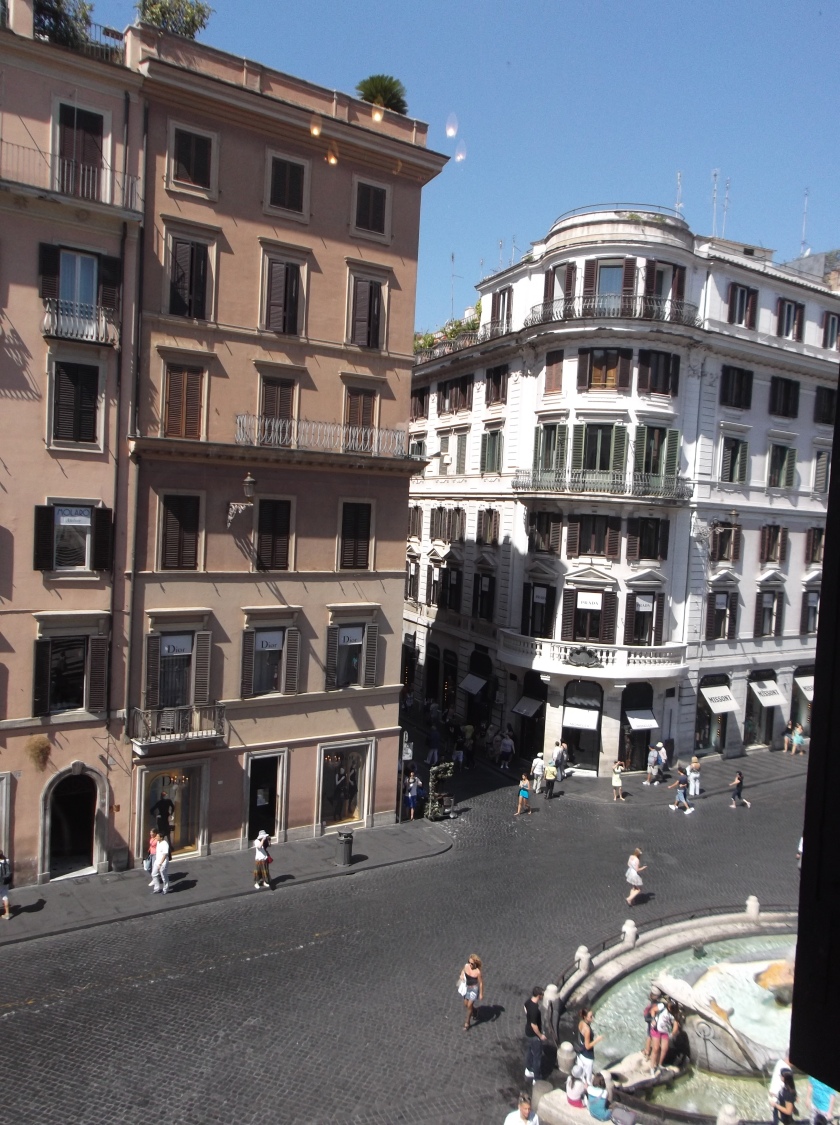
The Piazza and Fontana della Barcaccia viewed from Keats-Shelley Museum
As previously mentioned the Piazza di Spagna was the area where English tourists congregated and as a nation we are very fond of a cup of tea. Two ladies who arrived in Italy in 1893 were able to exploit this need in order to make a successful business which is still flourishing today. Babington’s Tea Rooms can be found on the left side of the steps.
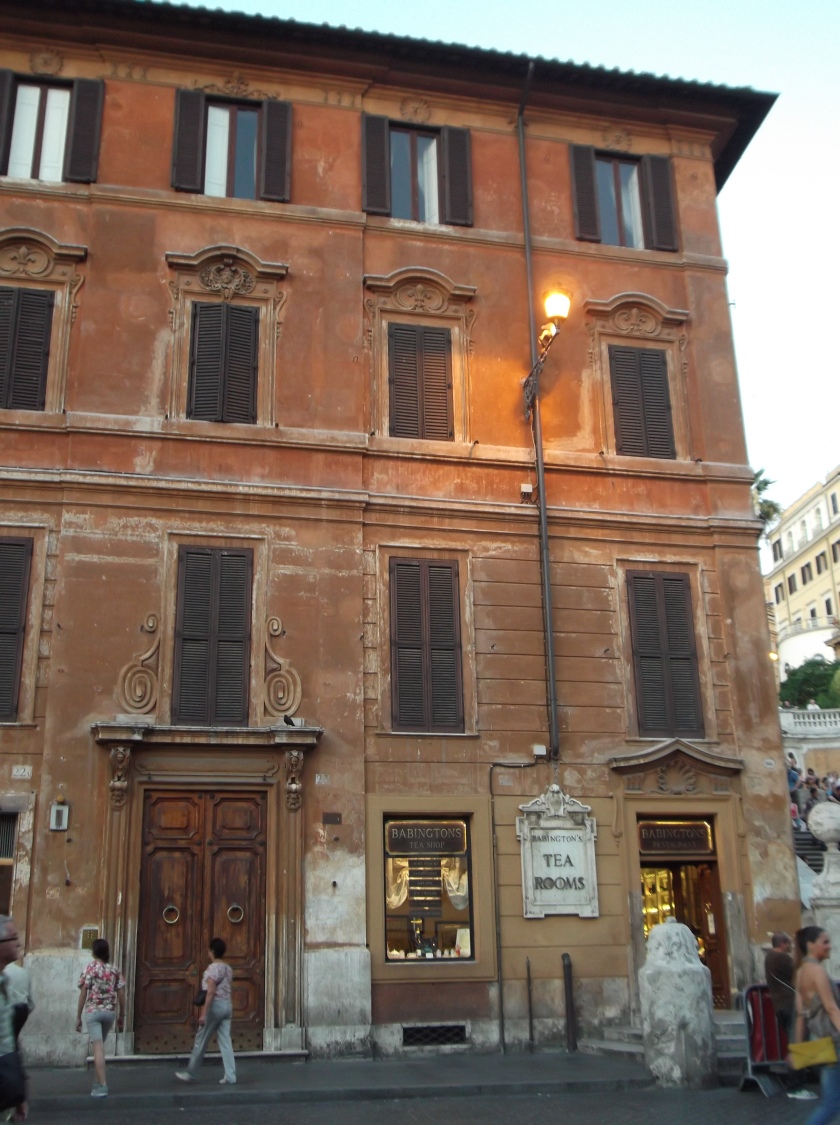
Babington’s Tea Rooms
When the English Anna Maria Babington and the New Zealand Isabel Cargill arrived in Rome they invested their £100 in opening a tea rooms on the Via dei Due Macelli, close to the piazza. Obviously it was a resounding success, as it provided the comforts of home for the weary tourist, and the next year they relocated to the building on the left side of the steps.
In 1910 Annie Cargill the sister of Isabel, arrived in Rome and opened the Hotel Londra & Cargill on the corner of Via Collina and the Piazza Sallustio. The hotel is a large building dating from the 1800s and is open to this day. Unfortunately the tea room business was effected by the outbreak of the first world war and this continued into the 1920s. Anna Maria moved to Switzerland due to ill health and sadly died of a heart attack. Isabel’s daughter Dorothy, from her marriage to the Italian artist Giuseppe da Pozzo, took over the management of the tea rooms. Annie invested money in the tea rooms, they were refurbished and business started to pick up again. Throughout the second world war the family left Rome, when they returned after the war they found out that the staff had kept the tea rooms open using their own rations. This family run business is still as successful as ever, and has built up a worldwide following through its website and sales of its merchandise.
The photos are from the author’s own collection.
